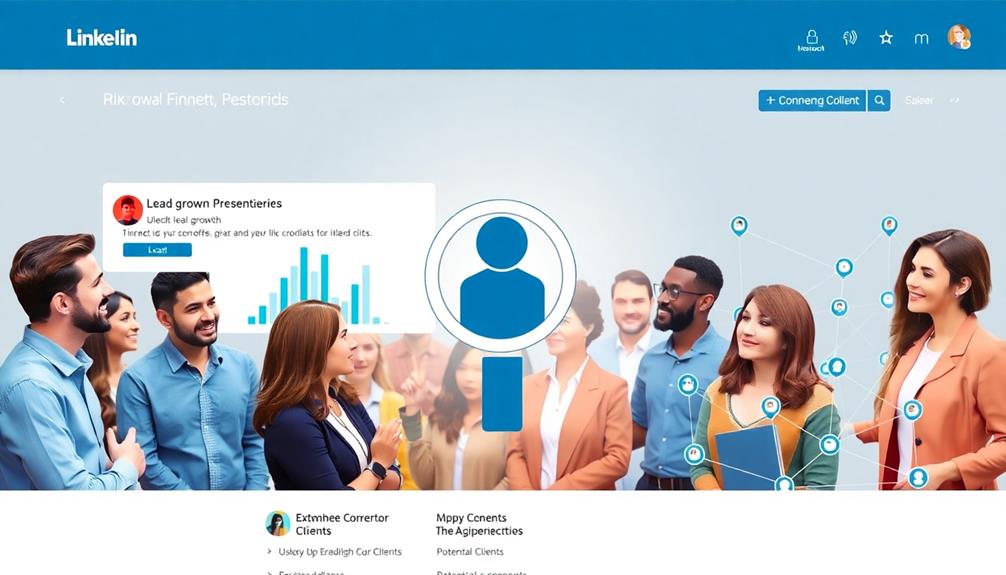Stealth competitive analysis lets you uncover content ideas by closely observing your competitors' strategies. You'll want to identify market gaps they might overlook, making your content stand out. Use tools like SEMRush or BuzzSumo to track their performance and see what types of content resonate with audiences. Analyzing this data helps you find unique angles and improve your own strategy. By learning from their successes and failures, you'll elevate your content game. Keep honing your approach, and you'll reveal even more insights that can elevate your brand's presence in the market.
Key Takeaways
- Conduct discreet observations of competitors to identify successful content strategies and market gaps.
- Utilize tools like SEMRush and BuzzSumo to analyze competitors' online activities and content performance.
- Reverse-engineer competitor content to inspire original ideas and discover unique topics that resonate with your audience.
- Monitor performance metrics to refine your content strategy based on audience engagement and trends.
- Maintain a flexible content calendar that integrates insights from competitor analysis for timely and relevant content delivery.
Understanding Stealth Competitive Analysis

Engaging in stealth competitive analysis means discreetly observing your competitors' content strategies and marketing tactics without tipping them off. This stealth marketing strategy allows you to gather authentic insights into their online presence, from social media engagement to customer interactions.
By tracking what your competitors are doing, you can identify successful content creation tactics and gaps that exist in the market. For instance, examining the latest trends in AI-driven security systems can provide a nuanced understanding of how competitors are leveraging technology to enhance their content strategies.
Utilizing tools like social media analytics platforms helps you monitor performance metrics, revealing which content formats resonate best with their audience. This information is invaluable for shaping your own content strategy.
Compile a list of your competitors' unique value propositions and analyze the types of content they produce. You'll uncover opportunities to differentiate your messaging and stand out.
Stealth competitive analysis isn't a one-time task; it encourages continuous monitoring and adaptation of your strategies based on evolving market dynamics and audience preferences.
Embracing this approach ultimately enhances your brand positioning and engagement, making it easier to develop content that truly connects with your target audience. By understanding these principles, you can leverage the insights gained from stealth competitive analysis to inform your content creation efforts effectively.
Benefits of Stealth Competitive Analysis

Stealth competitive analysis helps you spot market gaps that your competitors might be missing.
By enhancing your content strategy, you can create unique offerings that truly resonate with your audience. This approach not only sets you apart but also keeps your content fresh and relevant.
Additionally, leveraging high-quality content can greatly boost your credibility and trustworthiness, further enhancing your competitive edge.
Identify Market Gaps
In today's fast-paced market, uncovering hidden opportunities can set your business apart from the competition. By engaging in stealth competitive analysis, you can identify market gaps that others might overlook.
Start by analyzing your competitors' weaknesses and unmet consumer needs, such as their common financial terms that might confuse your target audience. This approach reveals potential areas for differentiation, allowing you to create content that truly resonates with your audience.
Utilize tools like SEMRush or BuzzSumo to dig deeper into your competitors' content strategies and consumer engagement. You'll likely pinpoint topics they haven't addressed, enabling you to develop targeted content marketing strategies that fill these gaps.
For instance, if you notice competitors lacking depth in certain areas, you can plunge into rich, engaging content that provides real value.
Moreover, by examining competitors' social media engagement, you can uncover opportunities to connect through unique storytelling. This not only enhances your brand's relatability but also reinforces your position as a thought leader in your industry.
Enhance Content Strategy
Uncovering the benefits of stealth competitive analysis can greatly enhance your content strategy. By observing your competitors' successful content strategies, you can gain insights that allow you to refine your own approach. This method helps you identify gaps in your current strategy and explore new content types that resonate with your audience, boosting brand awareness and organic engagement.
Here's a quick visual representation of how stealth competitive analysis can enhance your content strategy:
| Focus Area | Competitive Insight | Actionable Strategy |
|---|---|---|
| Content Types | Identify high-performing formats | Experiment with new content formats |
| Audience Engagement | Analyze social media interactions | Tailor content to audience feedback |
| Brand Visibility | Replicate effective promotional tactics | Maintain authenticity while increasing reach |
Steps for Effective Competitor Research

Conducting effective competitor research is essential for any business looking to thrive in a competitive landscape. Start by identifying your direct and indirect competitors using tools like Google and social media. This helps you understand brands targeting similar customer segments.
Next, dive deep into their business models. Analyze their target audiences, product offerings, and overall market share to gain insights into their positioning.
Examine the 4 Ps—product, price, promotion, and place—to uncover competitors' strategies and tactics. This will help you identify gaps in the market that you can exploit.
Organize your findings in spreadsheets or tools like Airtable and Google Sheets. Categorize competitors by strengths, weaknesses, and unique value propositions for easier analysis.
Analyzing Competitor Content Strategies

Understanding your competitors' content strategies can greatly impact your own marketing efforts. Start by analyzing competitor content strategies to identify what types of content they produce, like blog posts, videos, and social media updates. This helps you see what resonates with their target audience and what topics generate buzz in your industry.
Next, evaluate the tone and voice of their content. This will give you insights into how they connect with their audience, revealing demographic insights and preferences that you can leverage.
Utilize tools like BuzzSumo and SEMrush to track which of their content pieces are shared most often, helping you brainstorm relevant content ideas.
Don't forget to document how frequently and when they release content. Uncovering patterns here can indicate ideal posting schedules for engaging your audience.
Finally, reverse-engineer their unique value propositions (UVPs) by analyzing their messaging. This can inspire your own content strategy, allowing you to differentiate your brand in a crowded marketplace.
Tools for Competitor Analysis

When you're diving into competitor analysis, using the right tools can make all the difference. Tools like Keysearch are invaluable for discovering organic search opportunities through competitor keyword analysis. This can notably enhance your content strategies, giving you insights into what's working for others in your industry.
SEMRush is another powerhouse, providing thorough insights into your competitors' online activities. You can track their SEO performance, paid advertising efforts, and social media engagement, enabling you to adjust your marketing tools accordingly.
If email marketing is a focus for you, Owletter specializes in analyzing competitors' email campaigns. It helps you understand their strategies and audience engagement tactics, giving you a leg up in your own campaigns.
For social media insights, Sotrender tracks competitors' KPIs and content performance, helping you identify effective strategies and content types.
Implementing Your Findings

Implementing insights from your competitive analysis can considerably elevate your content strategy. Start by identifying gaps in your current approach that competitors may have overlooked. Use their successful content as a springboard for your ideas, focusing on engaging formats and themes that resonate with your audience.
To help you visualize this process, consider the following table:
| Action | Purpose | Outcome |
|---|---|---|
| Analyze Competitor Content | Identify gaps and opportunities | Unique topic generation |
| Reverse-Engineer Success | Inspire original content | Engaging formats and themes |
| Monitor Performance Metrics | Prioritize relevant topics | Higher audience engagement |
| Update Content Calendar | Guarantee diverse content | Aligned with consumer needs |
Regularly review competitors' updates to adapt your content strategy in real-time. This keeps you ahead in a rapidly changing consumer environment. By creating a content calendar that integrates your findings, you'll guarantee a variety of topics that align with both audience interests and competitive opportunities. Embrace these insights, and watch your content strategy thrive!
Frequently Asked Questions
Why Is Stealth Marketing so Effective?
Stealth marketing's effectiveness lies in its subtlety and authenticity. It engages you without pressure, fosters trust, and encourages organic conversations. You'll find yourself more receptive to brands that blend seamlessly into your everyday experiences.
What Is a Competitor Analysis Content Strategy?
A competitor analysis content strategy helps you examine your competitors' content types, tones, and distribution methods. By identifying gaps and opportunities, you can refine your messaging and create engaging content that resonates with your audience.
What Is an Example of Stealth Marketing?
Think of *Stranger Things*—Coca-Cola's subtle product placement is a perfect example of stealth marketing. It integrates brands seamlessly into stories, making promotions feel organic and engaging, rather than intrusive or forced. You notice, but it doesn't overwhelm.
How Do You Find Video Ideas With Competitor Analysis?
To find video ideas through competitor analysis, you'll analyze trending topics, engagement rates, and presentation styles. Look for content gaps, monitor audience feedback, and adapt successful strategies to create unique, relevant videos that resonate with your audience.
Conclusion
In the game of content creation, stealth competitive analysis is your secret weapon, like a ninja in the shadows. By uncovering insights from your competitors, you're not just gathering ideas; you're sharpening your sword for the battle ahead. Embrace the tools and strategies laid out, and watch your content blossom like a cherry tree in spring. With each step, you're not just participating; you're crafting a masterpiece that stands out in a crowded marketplace.










